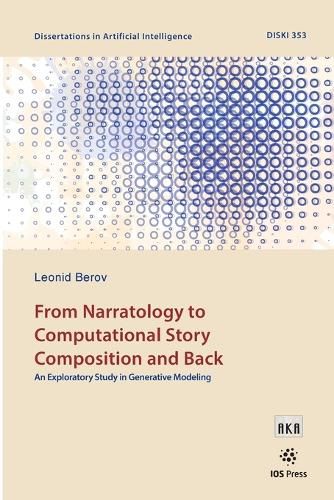Readings Newsletter
Become a Readings Member to make your shopping experience even easier.
Sign in or sign up for free!
You’re not far away from qualifying for FREE standard shipping within Australia
You’ve qualified for FREE standard shipping within Australia
The cart is loading…






Although both deal with narratives, the two disciplines of Narrative Theory (NT) and Computational Story Composition (CSC) rarely exchange insights and ideas or engage in collaborative research. The former has its roots in the humanities, and attempts to analyze literary texts to derive an understanding of the concept of narrative. The latter is in the domain of Artificial Intelligence, and investigates the autonomous composition of fictional narratives in a way that could be deemed creative. The two disciplines employ different research methodologies at contradistinct levels of abstraction, making simultaneous research difficult, while a close exchange between the two disciplines would undoubtedly be desirable, not least because of the complementary approach to their object of study. This book, From Narratology to Computational Story Composition and Back, describes an exploratory study in generative modeling, a research methodology proposed to address the methodological differences between the two disciplines and allow for simultaneous NT and CSC research. It demonstrates how implementing narratological theories as computational, generative models can lead to insights for NT, and how grounding computational representations of narrative in NT can help CSC systems to take over creative responsibilities. It is the interplay of these two strands that underscores the feasibility and utility of generative modeling. The book is divided into 6 chapters: an introduction, followed by chapters on plot, fictional characters, plot quality estimation, and computational creativity, wrapped up by a conclusion. The book will be of interest to all those working in the fields of narrative theory and computational creativity.
$9.00 standard shipping within Australia
FREE standard shipping within Australia for orders over $100.00
Express & International shipping calculated at checkout
Stock availability can be subject to change without notice. We recommend calling the shop or contacting our online team to check availability of low stock items. Please see our Shopping Online page for more details.
Although both deal with narratives, the two disciplines of Narrative Theory (NT) and Computational Story Composition (CSC) rarely exchange insights and ideas or engage in collaborative research. The former has its roots in the humanities, and attempts to analyze literary texts to derive an understanding of the concept of narrative. The latter is in the domain of Artificial Intelligence, and investigates the autonomous composition of fictional narratives in a way that could be deemed creative. The two disciplines employ different research methodologies at contradistinct levels of abstraction, making simultaneous research difficult, while a close exchange between the two disciplines would undoubtedly be desirable, not least because of the complementary approach to their object of study. This book, From Narratology to Computational Story Composition and Back, describes an exploratory study in generative modeling, a research methodology proposed to address the methodological differences between the two disciplines and allow for simultaneous NT and CSC research. It demonstrates how implementing narratological theories as computational, generative models can lead to insights for NT, and how grounding computational representations of narrative in NT can help CSC systems to take over creative responsibilities. It is the interplay of these two strands that underscores the feasibility and utility of generative modeling. The book is divided into 6 chapters: an introduction, followed by chapters on plot, fictional characters, plot quality estimation, and computational creativity, wrapped up by a conclusion. The book will be of interest to all those working in the fields of narrative theory and computational creativity.